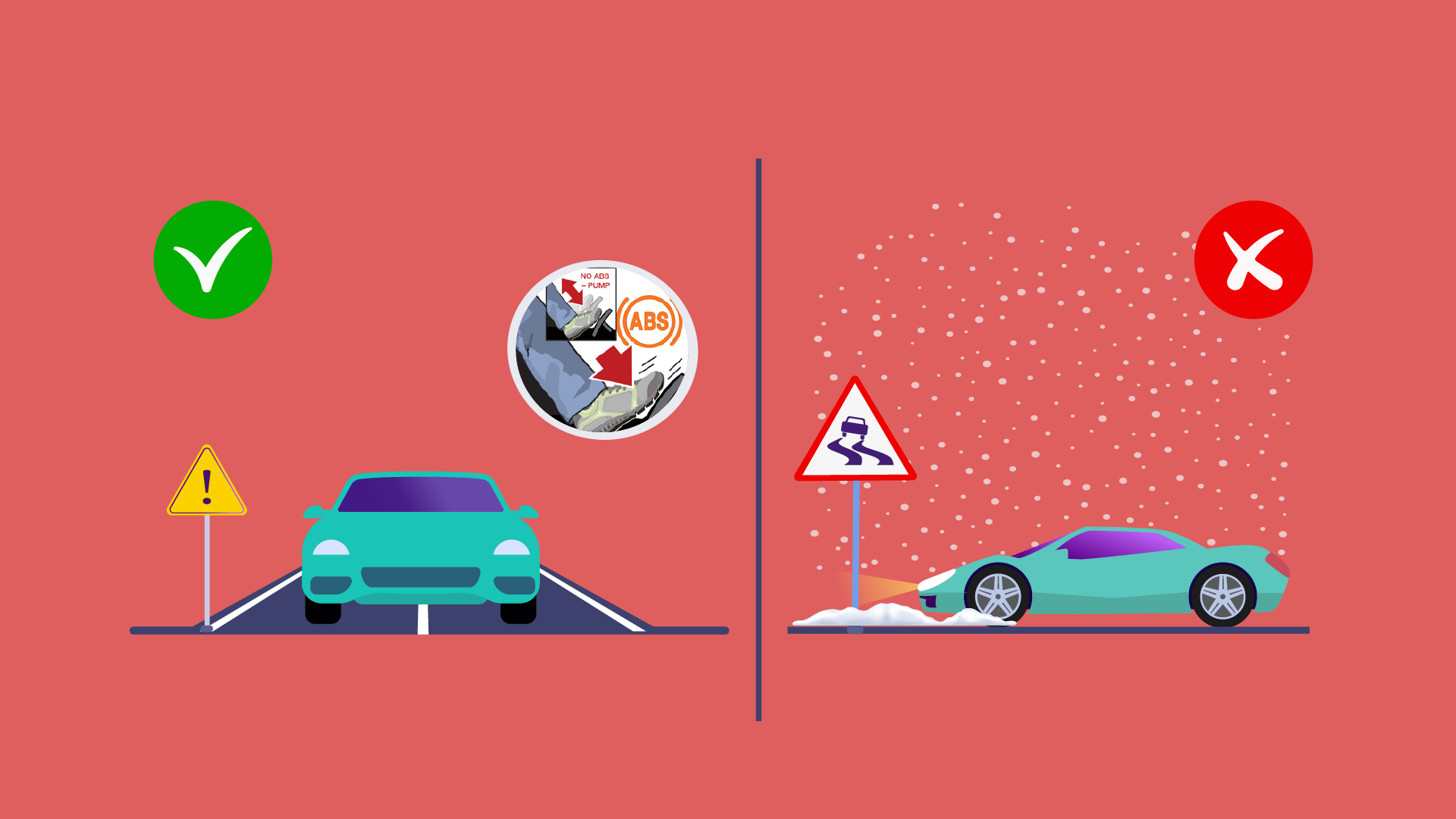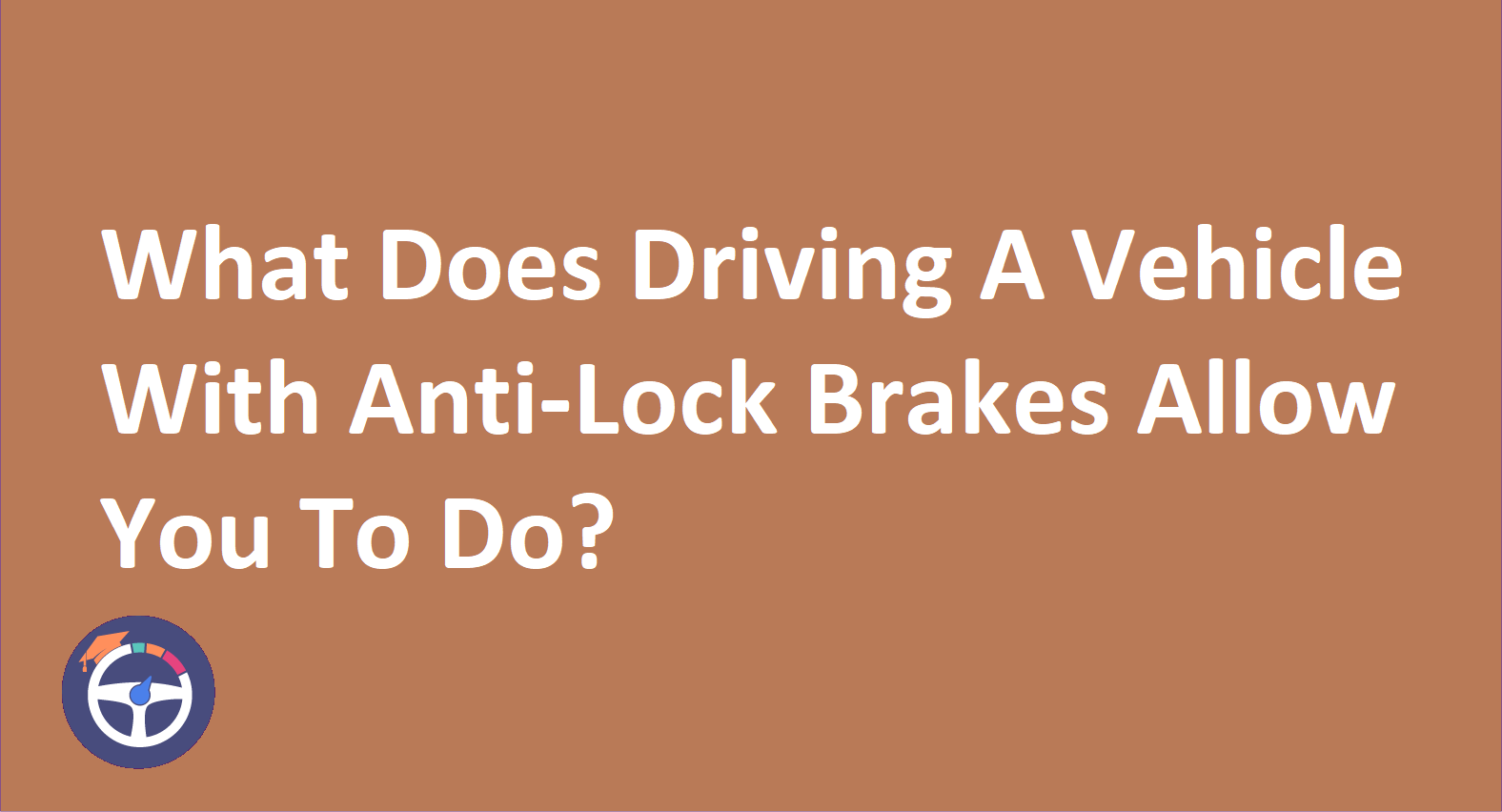When Are Anti-Lock Brakes Most Effective And Ineffective?
ABS is effective in emergencies, prevents wheel lock-up, less effective on slippery surfaces and maintains steering control. If your vehicle is equipped with ABS and you need to make an emergency stop, press the brake pedal firmly and hold it until the vehicle comes to a complete stop. You may notice a grinding noise and feel vibrations in the brake pedal when the ABS is engaged; this is normal. Keep applying pressure on the brake pedal until the vehicle has fully stopped.

Content
- When Are Anti-Lock Brakes Most Effective And Ineffective?
- What are the main components of ABS?
- When Are Anti Lock Brakes Most Effective?
- When Are Anti Lock Brakes Most Ineffective?
- When Will Anti Lock Brakes Take Effect?
- Advantages of Anti-Lock Braking System ABS
- That’s A Wrap!
- FAQ
In the realm of road safety, Anti-Lock Braking Systems (ABS) play a pivotal role. In this blog, we will highlight everything from understanding the ABS components to on what type of road surface may anti-lock brakes be ineffective.
What are the main components of ABS?
The main components of Anti-Lock Braking Systems (ABS) are:
Sensors: Sensors play a crucial role in ABS by constantly monitoring the speed of each wheel. These sensors provide real-time data to the system. It allows it to detect potential wheel lock-up.
Electronic Control Unit (ECU): The ECU is the brain of the ABS. It processes information from the sensors and makes rapid decisions about adjusting brake pressure. It helps to prevent wheel lock-up.
Hydraulic Modulator: The hydraulic modulator is responsible for regulating brake pressure. It modulates the pressure to individual brakes based on the signals received from the ECU. It allows precise control and preventing wheel lock-up.
Brake: The brake itself is a fundamental component. ABS works by modulating the brake pressure to prevent the wheels from locking up during hard braking. It helps in maintaining control and stability.
When Are Anti Lock Brakes Most Effective?
Anti-lock brakes (ABS) are most effective when on dry, solid road surfaces. They excel in allowing drivers to brake as quickly as possible while still maintaining control of the vehicle. This effectiveness is particularly pronounced on roads with good traction. It enhances overall safety during braking maneuvers.
When Are Anti Lock Brakes Most Ineffective?
ABS may be less effective on icy or gravel surfaces. These conditions can challenge the system's ability to prevent wheel lock-up. They maintain traction, potentially reducing its effectiveness in preventing skidding during braking.
When Will Anti Lock Brakes Take Effect?
Anti-lock brakes (ABS) take effect during hard braking or emergency braking situations. When the system detects an imminent wheel lock-up, it intervenes by modulating brake pressure rapidly. This dynamic action occurs in real-time. It prevents wheel lock-up and allows the driver to maintain control of the vehicle. ABS is designed to activate quickly in response to sudden braking. It ensures optimal effectiveness during emergency maneuvers.
Advantages of Anti-Lock Braking System ABS
The advantages of Anti-Lock Braking System (ABS) are:
Improved Control: ABS enhances vehicle control during hard braking by preventing wheel lock-up. This allows drivers to maintain steering control. It is crucial for avoiding obstacles in emergency situations.
Reduced Risk of Skidding: By modulating brake pressure, ABS reduces the risk of skidding. This is particularly beneficial in adverse road conditions or emergency stops.
Steering Ability While Braking: One of the key advantages of ABS is the ability to steer the vehicle even during braking. This feature is essential for maneuvering around obstacles and maintaining directional control.
Shorter Stopping Distances: ABS can contribute to shorter stopping distances in certain situations. It prevents wheel lock-up. It as well allows the tires to maintain optimal traction with the road surface.
That’s A Wrap!
Anti-Lock Braking Systems are a cornerstone of road safety. It offers a balance between control and effectiveness. As drivers, understanding the intricacies of ABS equips us to navigate diverse road conditions. And emergency situations with confidence! Drive safe, stay informed!
FAQ
1. On what surfaces does ABS face challenges in maintaining traction?
ABS may be ineffective on gravel surfaces, icy conditions, or very wet surfaces. In these situations, insufficient friction prevents the wheels from regaining traction when ABS partially releases the brakes. It leads to challenges in maintaining optimal traction.
2. How does ABS enhance vehicle balance during braking?
In the Anti-Lock Braking System, ABS enhances vehicle balance by preventing wheel lock-up. The electronic control unit (ECU) ensures that all four wheels rotate intermittently during braking. It detects the varying brake force needed for each wheel. This distribution of brake force helps keep the vehicle balanced, even under diverse road conditions.
3. What are the three types of ABS?
The three types of ABS are:
- Four channel-four sensor ABS
- Three channel-four sensor ABS
- Three channel-three sensor ABS
Each type is designed to optimize braking performance under various driving conditions.
4. How does ABS contribute to reducing uneven tire wear during braking?
ABS prevents wheel lock-up during braking, eliminating skidding and uneven tire wear. By modulating brake pressure, ABS ensures that the tires maintain optimal traction with the road surface. It leads to more even wear and prolonged tire life.
5. Can ABS assist in maintaining control while steering around obstacles?
Yes, ABS plays a crucial role in maintaining control while steering around obstacles. By preventing wheel lock-up during braking, ABS allows the driver to retain steering ability. It makes it easier to navigate around obstacles. It helps in maintaining directional control in emergency situations.


